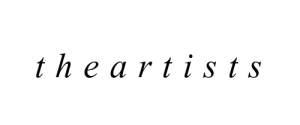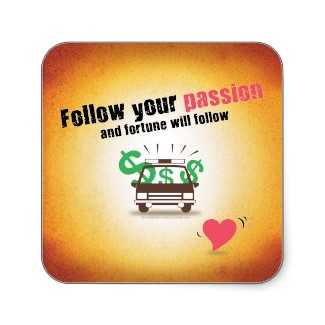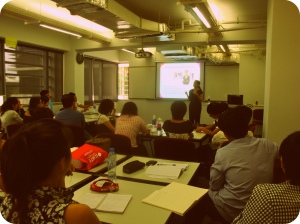Author: Nguyen Hoang Vu (s3360648)
It all started when I ran across an old friend in an advertising workshop 3 months ago. As always, I was the one who struck up the conversation.
– Hey, long time no see! How have you been?
– I’ve finally got a job.
– Great! What kind of job is it?
– Well, I’m working as a full-time whore.
– Dafuq?
– Teehee, ain’t an account person and a bitch the same? Work your ass off day and night only to satisfy your client!
I laughed my head off. Not until I took a course in client management did I realize that joke somehow rang true, at least in terms of agency remuneration. That is, if you want to be either a good account person or a thriving prostitute, one of the fundamental tricks to learn is how to bill intangible values in a way that appeals to your clients while ensuring your (agency’s) income. Indeed, the art of account management has nothing to do with the ability to produce art or copy, but rather lies within the financial and relationship sides of this creative business (Hameroff 1998).

Billing non-measurable values is essential for account managers and prostitutes alike
Luckily, I had a chance to talk with Mrs. Truong Ngoc Minh Dang, account manager of Le & Brother Limited (or Le Bros), on this issue. Founded in 2002 as a subsidiary of Le Group, Le Bros has been offering advertising and PR services to numerous clients of different sectors, from FMCG to banking and automobiles (Le Bros 2010). As a local agency, it has always been looking for optimal approaches to remuneration, some of which fit in with the communication industry’s context in Vietnam; the others comply with the current universal practice. This process, however, doesn’t start with money, but rather with such a fluid entity called “agency values”.

Mrs. Truong Ngoc Minh Dang, Account Manager of Le Bros
Measuring Agency Values: Mission Impossible?
Everything is measurable as long as it stays within some kinds of frames. But when it comes to the creative industries, where “think outside the box” has become a buzzword, how can we measure the value of our creative services?
“As ‘creativity’ is a fancy word, agencies should have their own criteria for judging ideas,” said Dang. “At Le Bros, we use these four as the yardsticks: quantity, variety, novelty, and quality.”
Fair enough. Contrary to popular belief, one needs to combine left-brained and right-brained benchmarks to quantify creativity (Christopher & Wuson 2010). This is highly applicable to advertising, an industry where vertical thinking is just as important as lateral thinking (Felton 2006).
An agency’s values, nonetheless, go beyond creative ideas. “Intangible as it may seem, the agency’s reputation is a requisite for pricing its service,” Dang emphasized. “Besides the invoice quotation, the agency has to deploy their credentials to initiate partnerships and build trust.”
Vietnamese start-ups often lowered their price considerably to attract new clients. “It’s not a good strategy. These agencies had better enhance their added values instead,” Dang said. “Added values are the primary competitive advantages of big media groups. For instance, when Le Bros signs an event contract with client A, it can offer the brand extra coverage on media channels owned by Le Media. This really makes the difference!”
Money, Money, Money, Must be Funny
There are currently three universal approaches to remuneration: commission, fee, and payment-by-results (Tripathy 2007). At Le Bros, all of them are combined.
- Commission: Over the last 20 years, advertising agencies would charge clients a 15% commission rate on the media booking fees (Dickinson 2009). Today, as Dang stated, the commission rate differs from one client to another, and this discrepancy depends very much on the three-legged stool of relationship: media-agency, agency-client, and client-media.
- Fee: Vietnamese agencies, on average, charge 10-20% of the clients’ total advertising budgets for their services. These fees are based upon the hours spent on the project (recorded using time sheets). Approximately 5-15% more are drawn from the media commissions and production mark-ups. Often, 30% of the fees are deposited, 50% are paid in progress, and the rest are remunerated in the evaluation phase.
- Payment-by-results: Only “big” clients require this method. Certain key performance indicators (KPIs) such as brand awareness, brand recall, or even market share are initially agreed upon and then used to determine a certain proportion of the payment. Although this approach stimulates the agency to take responsibility of its works, it’s very risky. Communication-based, or worst, sales-based goals cannot be wholly attributed to advertising/PR effort. Other elements such as web design or retail merchandising do matter (Dickinson 2009). “Hence, it’s crucial that the account person manage the client’s expectations early on,” Dang shared. “Make sure the client’s definition of ‘success’ is identical to yours by using a common language.” Moreover, Robert Solomon (2008) advised involving both the client and the creative team in creating the brief, as well as transparently informing the client of the steps your agency’s going to take. It’s also important to conduct periodic performance reviews to mutually improve fundamentals for both parties (ACA 2011).

Remember to ask for a 30% deposit
Normally, the finance department will calculate an estimate. Once this is signed by the client, the account manager must supervise the activities closely to make sure the budget is not exceeded (Dickison 2009). “Should any extra expense arise, you have to be quick,” Dang stressed. “Explain to the client immediately, and find ways to reduce the budget of other items. To do so, sometimes you must know the clients’ businesses even better than themselves.” Keeping detailed records of previous projects is also a good way to avoid this risk, because it offers a quasi-accurate budget reference for each item (Dickison 2009).
Pitching: Walking the Tightrope

Pitching can be as heart-stopping as walking a tightrope
In Vietnam, when the budget for the client’s project is more than $25,000, agency pitching is a must. This, however, only happens perfunctorily on the surface if the client has already had an implicit preference beforehand. The client has to sign an agreement stating that it still pays the agency a one-day fee if the proposal is rejected. If the client picks the concept of agency A but choose agency B to execute this concept, it has to pay agency A for the concept and delegation (Truong 2013). “In case the client ‘plays dirty’ (copying the concept or part of it without any payment), it’s likely that the fooled agency won’t participate in future pitching sessions until the head of that brand leaves,” Dang said. “And of course we’ll spread bad rumors about them to other agencies!”
“Good” Things Come for Those Who Bill
An account manager is a steward of the client’s money. To wrap up the endless controversy of agency remuneration, I would use Dang’s final remark: “Every agency has its objectives for monthly profit margin, and the account department’s chore is to help the management ensure these objectives are met via wise negotiation, proactive forecasting, and excellent relationship management.”
Word count: 1,138
References:
Association for Communication and Advertising (ACA) 2011, ‘Advertising Remuneration Principles’, ACA, July, <http://www.acasa.co.za/downloads/AGENCY%20REMUNERATION%20PRINCIPLES%20July%202011%20%20Version%200.9.pdf>.
Aunty Ann’s Raving’s 2013, ‘Shoes and Whip’, image, Blog Spot, 16 May, viewed 6 September 2013, <http://auntyannsravings.blogspot.com/>.
Bristol Culture 2013, ‘Tightrope Circus’, image, Bristol Culture, 8 June, viewed 6 September 2013, <http://www.bristol-culture.com/2013/06/08/review-bianco-creative-common/>.
Christopher, E & Wuson, B 2010, ‘Quantifying Creativity: Finding the Right Agency Compensation Model’, A.T. Kearney, 20 May, viewed 4 September 2013, <http://www.atkearney.com/paper/-/asset_publisher/dVxv4Hz2h8bS/content/quantifying-creativity/10192>.
Dickinson, D 2009, The New Account Manager, 2nd edn, The Copy Workshop, Chicago, US.
Felton, G 2006, Advertising: Concept & Copy, 2nd edn, W.W. Norton, New York.
Marie Claire n.d., ‘Trafico humano meninas’, image, Getty Images, viewed 6 September 2013, <http://revistamarieclaire.globo.com/MC-Contra-o-Trafico-Humano/noticia/2013/01/mulheres-maiores-vitimas-do-trafico.html>.
Hameroff, EJ 1998, The Advertising Agency Business: the Complete Manual for Management & Operation, 3rd edn, NTC Business Books, Chicago, US.
Le Bros 2010, Introduction, homepage, Le Bros, Vietnam, viewed 5 September 2013, <http://lebros.vn/index.php?lang=en>.
Solomon, R 2008, The Art of Client Service, Kaplan, New York.
Tripathy, MN 2007, ‘How Much is Your Advertising Agency Worth to You?’, Journal of Business and Economics Research, vol. 5, no. 12, pp. 25-30.
Truong, MD 2013, interview, 25 August.



























